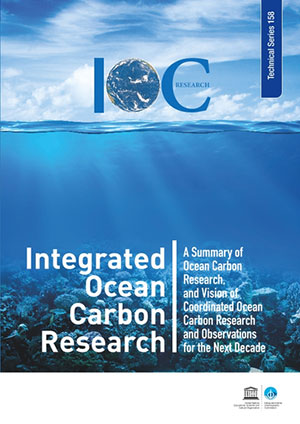
In absorbing carbon dioxide, the oceans play a crucial role in regulating the climate, a role yet to be fully understood. University of Hawaiʻi at Mānoa oceanographer Christopher Sabine co-authored a newly published strategy for comprehensive and coordinated ocean carbon research over the next decade.
The new report, Integrated Ocean Carbon Research: A Summary of Ocean Carbon Knowledge and a Vision for Coordinated Ocean Carbon Research and Observations for the Next Decade, was published by the United Nations Educational, Scientific and Cultural Organization's Intergovernmental Oceanographic Commission (IOC). It sets out to accomplish the vital task of indicating the current gaps and future directions for the integrated research of the ocean's carbon cycle.
The ocean currently serves as the "blue lungs" of our planet. However, the ocean's ability to contribute to climate regulation may decline and even be reversed in the future. The new report thus examines available observations and research to determine whether the oceans will continue to "help" humanity or whether they will turn against it, making mitigation and adaptation to warming more difficult.
International collaboration
In developing the report, the IOC gathered experts from the five international research and coordination programs on ocean-climate interaction.
Sabine, who is one of the lead U.S. editors of the report, said, "Integrating the ocean carbon research conducted through multiple international programs will enhance the U.S. investments in understanding climate change and possible solutions."
"Bringing together the ocean carbon experts from different disciplines has created an exciting opportunity to address in a holistic fashion the critical questions of how the ocean affects and is affected by climate and our attempts to mitigate climate change," stated Rik Wanninkhoff at NOAA, the other lead U.S. editor of the report.
This effort is an example of UH Mānoa's goals of Building a Sustainable and Resilient Campus Environment: Within the Global Sustainability and Climate Resilience Movement (PDF) and Excellence in Research: Advancing the Research and Creative Work Enterprise (PDF), two of four goals identified in the 2015–25 Strategic Plan (PDF), updated in December 2020.






